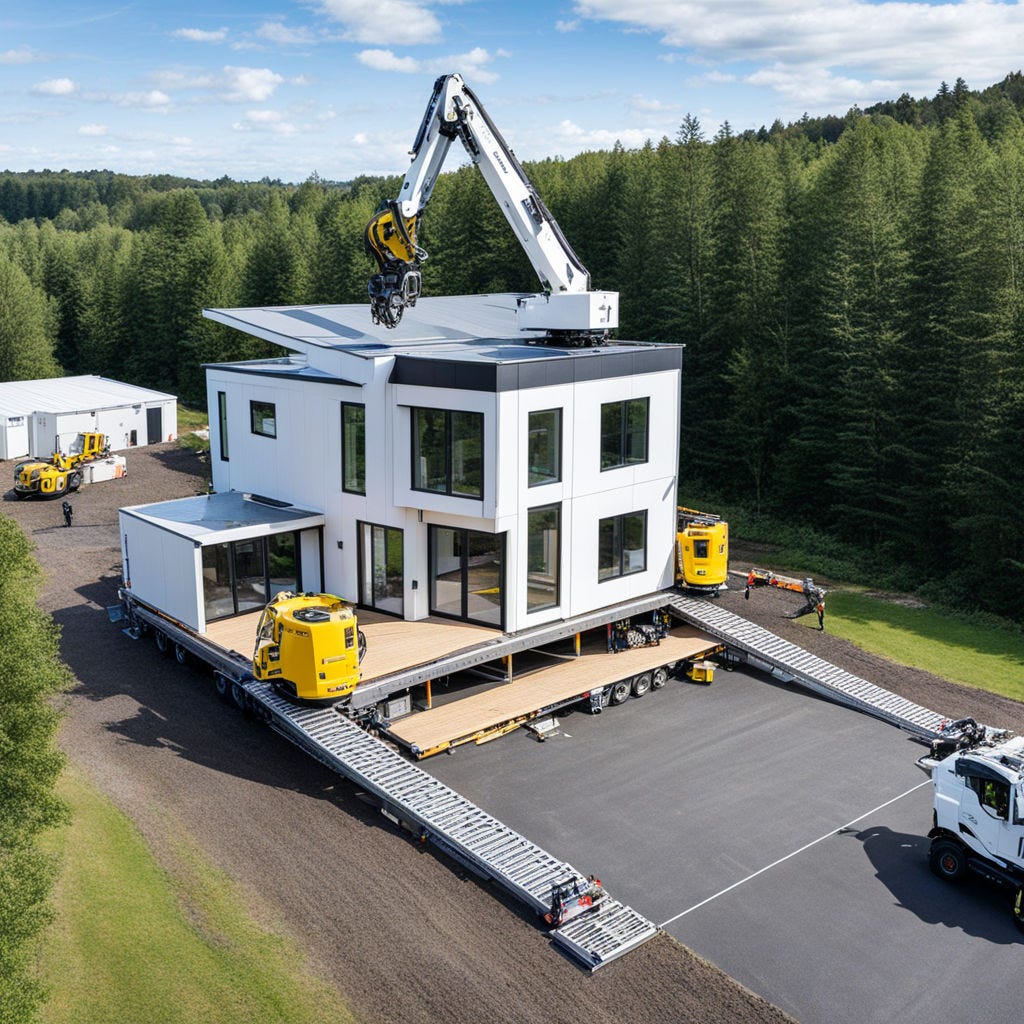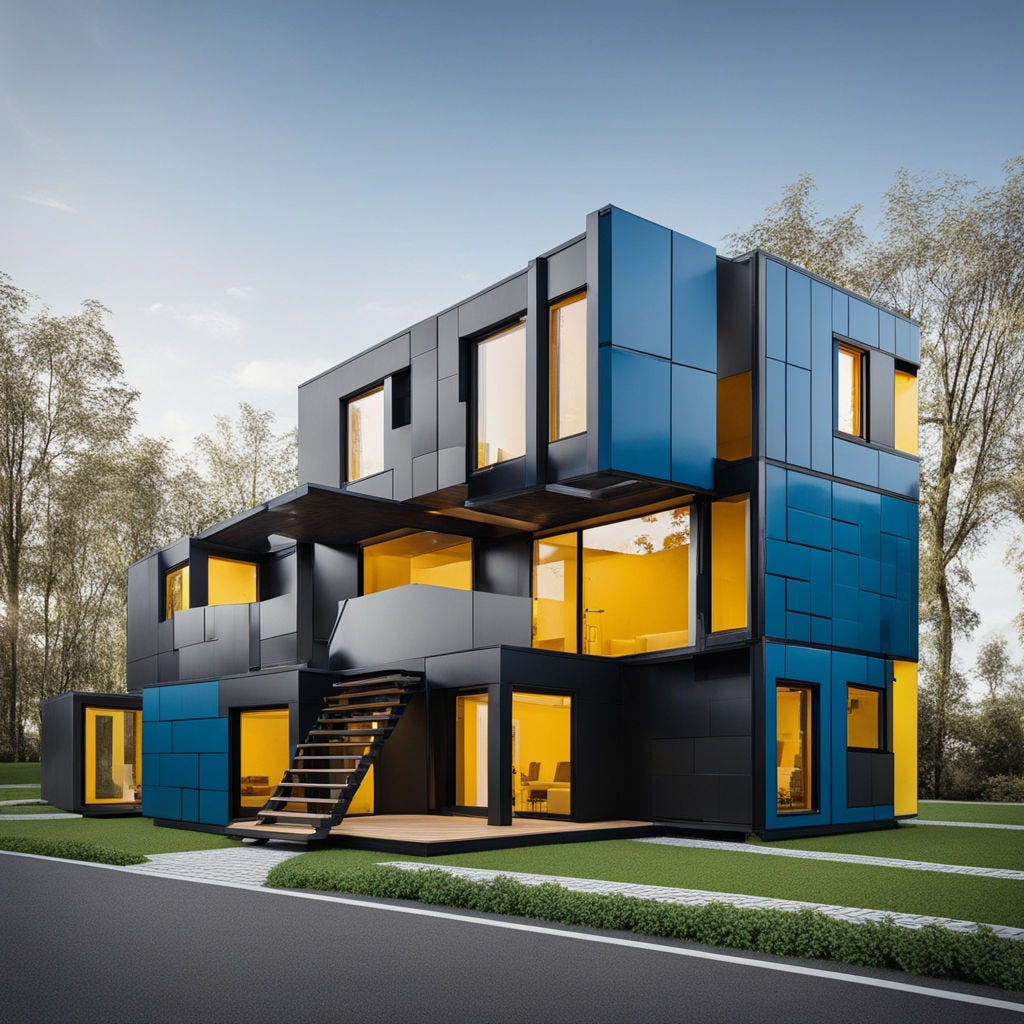Why Modular Housing Isn't Working Yet
How We Can Fix It, and What It Says About Building Product
Modular housing, the concept of building homes in factories and then assembling them on-site, has been heralded as a potential solution to the housing crisis. The idea—in several forms—has gone through hype waves over decades, and has recently come into its own again. It promises faster construction, lower costs, and more efficient use of labor and materials. However, despite these potential benefits, modular housing hasn't yet taken off in a big way, and its failure(so far) hands down some lessons for building impactful products.
One of the main issues with modular housing is the lack of variety. When people think of factory-built homes, they often picture identical, boxy units that lack character and charm. This "cookie-cutter" approach is a major turn-off for many potential buyers who want a home that reflects their style and needs. This isn’t universally the case, especially among many of the newest companies in the space which are offering a variety of Lego-like components that can be snapped together in a dizzying number of varieties, but the consumer appreciation of them has not yet changed. While not trying to put too much stock into it, this is very similar to what Tesla changed with EVs with the Roadster—it just took one great, eye-catching, flashy example of an EV breaking the golf-cart stereotype for it to be thoroughly broken. To make modular housing more appealing, there needs to be enough variety and customization available. Modular doesn't have to mean uniform - the components can be designed to allow for a range of configurations and finishes. The Lego metaphor works well, both in functional design and in the ability to combine wide ranges of disparate components into a near-totally custom end product.
Another challenge is the logistics of transporting the modular components from the factory to the building site. While it's more efficient to build in a controlled factory environment, those efficiency gains can be lost if the components are difficult or expensive to transport. Homes(or home parts) are bulky, and moving large sections over roads requires careful planning and can be subject to transport regulations. This is particularly challenging for areas that are far from the factories or have narrow, winding roads. If all of the efficiencies of mass production are lost in trying to transport big, bulky sections long distances from the factory—and you can’t have factories everywhere, that defeats the purpose—then why expend the effort? Despite this problem, I think there is a viable solution in perhaps fighting a standardized size that can be moved without making it an exceptional haul, perhaps a standard 2TEU container size.
There's also the issue of the foundation. While the home itself can be built in modular sections, the foundation typically still needs to be poured on-site in the traditional way. This means that modular construction still requires significant on-site work and coordination. The industry is yet to find a way to make foundations modular cost-effectively and efficiently. This is a first principles problem, wherein a necessary first component is an invisible stumbling block until you run right into it. The idea of modular housing has run into this problem over its hype cycles and is running into it again. Even with companies racing to build concrete-pouring robots, or try and use a 3D printer-like solution here, it takes away much of the shine of a totally mass-produced, affordable house.
This brings us to a key lesson for building products - the importance of looking at problems through first principles and considering the entire product development flow. In the case of modular housing, it's not enough to just make the house construction more efficient. The entire process needs to be considered, from the design and customization options to the logistics of transportation to the on-site assembly and finishing. Every part of the process needs to be optimized and integrated, not just the single part of manufacturing walls, floors, and window sections.
The same applies when building innovative products more generally. I would bet good money that anyone reading this knows the feeling of having an awesome idea, jumping into the guts of it, and finding out an upstream(or downstream, for that matter) component is a big limiting factor to where they just found that mojo. Something outside the scope of where the magic of the innovative spark was captured and outside of the part you are most enthusiastic about, becomes part of the problems-to-solve stack. This is something that can unfortunately only be counteracted through sober—but optimistic—first principles thinking and analysis of the problem through a wider scope.
In conclusion, while modular housing has great potential, it's not yet working at scale due to challenges around variety, transportation, and on-site work. To overcome these, first-principles thinking needs to be applied, considering the entire process holistically. The same lessons apply to building any product - zoom out, and consider the full range of developmental hurdles and operational factors. By doing so, products can be built that are not just innovative in theory, but that truly work for users in practice.
If you enjoyed this, please consider sharing it - the power of the Invest with Impact movement is only as great as those who know about it. If you haven’t already, go fill out the form at InvestWithImpact.vc to be featured. We feature startups for free, get them in front of some of the most innovation-hungry people in the world, and help them get the funding they need to change the world. If you have any questions, comments, or concerns, please leave a comment below, or DM me on Twitter @Garberchov. Have a great week! 🚀



